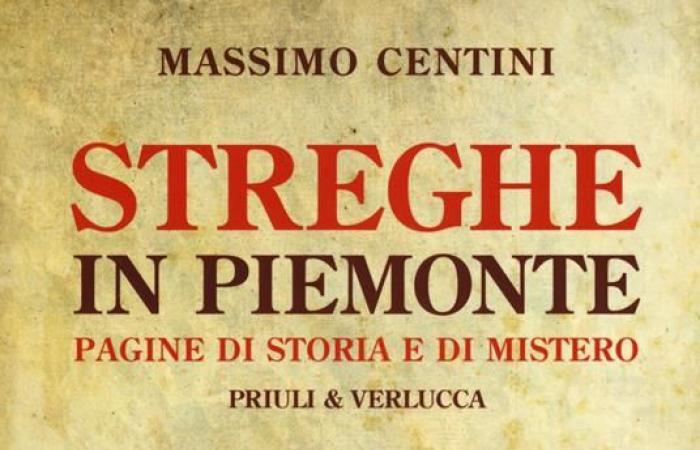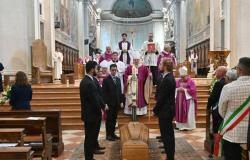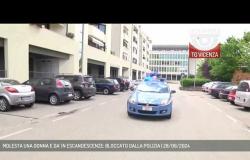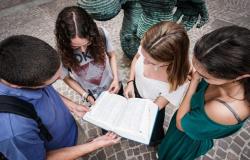
On the association’s YouTube channel, an interview with Massimo Centini, graduated in Anthropology (Faculty of Letters and Philosophy at the University of Turin), prolific essayist on topics relating to religious anthropology and popular traditions, collaborates with Italian and foreign universities and museums and teaches at the MUA – South Tyrolean University Movement of Bolzano. In the book WITCHES IN PIEDMONT. PAGES OF HISTORY AND MYSTERY, the Author reports, for the first time, historical documentation on the witch hunt in the subalpine region, which began in the thirteenth century and was particularly active in Piedmont and Lombardy.
The first of the documents he reported “…is a fine for a lady accused of casting spells in stellarum vision, a sort of proto-astrologer, then the documentation grows in the fourteenth century and reaches a peak in the fifteenth century, and then decreases but the latest trials are from Eighteenth century, in the midst of the Enlightenment.” In this regard, it is remembered that not even the Savoy Court was free from believing in witchcraft and the trial of Ruffia, accused of black magic against Vittorio Amedeo II, dates back to the early eighteenth century “…a particularly enlightened duke, with alchemical and esoteric interests, essentially to obtain a pardon upon his death and therefore the opening of the prisons.” The witch hunt mostly affected women everywhere, becoming a massacre in some areas of particular geopolitical interest; among these, in Piedmont, the Canavese area and the Val di Susa have always been areas of transit for people and trade, of co-presence of languages, traditions and faiths on the routes that yesterday as today connect to the Alpine passes and the Ligurian and French ports. Areas of notable presence Catara, persecuted as in the Midi. Accusations of heresy and witchcraft are combined in the inquisitorial process and the witch also has a role as a scapegoat for individual and social ailments and hardships in times of great famines, epidemics, inclemencies of the weather and everything violent that life entailed in common in urban, rural and wooded areas. Compelling and instructive pages are those of Massimo Centini whose rigorous multidisciplinary historical research makes use of the tools of anthropology, criminology, sociology of law and psychology. They offer a fresco of the painful and bloody results of uncritical thinking fomented by traditions, ignorance, sexism, which have produced witchcraft stereotypes transposed into every type of literature, even criminal, in iconography and fairy tales, everywhere. The figure of the witch with her horrid and terrifying procession – Sabbath, devil cult, orgy, anthropophagy, infanticide, incest, transformation into animals, night flight and more – goes beyond the historical dimension of the Hunt to become a shared experience, in the world, in collective imagination, maintaining its definition of otherness and evil. By Massimo Centini, we highlight among the many titles: Witches, religion and justice (Xenia), The murder of the Inquisitor. Heresy and witchcraft in 14th century Piedmont (Il Punto), The Devil’s Host. Wild hunt, furious army and mythology of the underworld (Yume), Poisons between science and myth (Diarkos); last but not least, presented in the 2023 edition of the Turin Book Fair, Criminal fairy tales. Violence, murder and evil in children’s literature (Edizioni Studio Tesi), composed during the pandemic. We would like to remind you, thanking the Author, that the presentation is part of the annual event “The witchcraft” proposed by the Il Paese delle Donne association and by Indici Paritari, for the “witches’ night” /23/24 June), a tradition particularly felt by religiosity Roman folk who believed in a gathering of flying devils and witches on the meadows of the Lateran following the ghosts of Herodias and Salome, damned for having caused the death of St. John the Baptist. The long torchlight procession towards the Basilica named after him opens the calendar holiday of 24 June and is accompanied by large bonfires lit on the lawns and countless stratagems and spells to keep witches and devils away from the houses.
Info: Massimo Centini, Witches in Piedmont. Pages of history and mystery. – Scarmagno (TO): PRIULI & VERLUCCA 2010.





